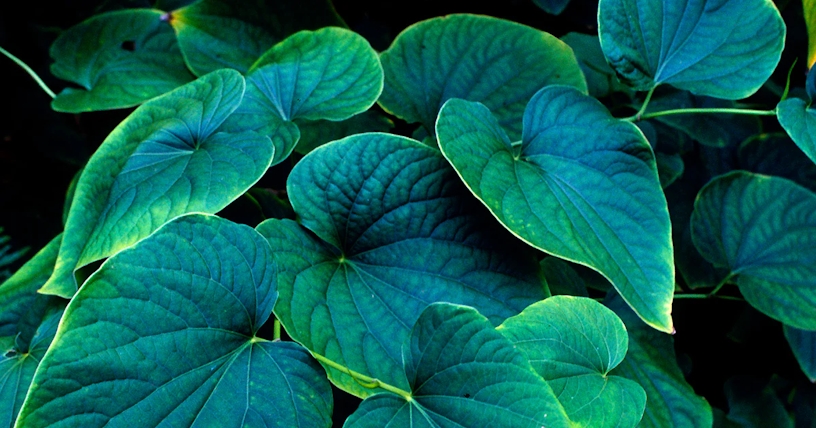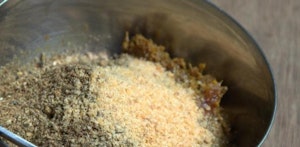
9 Forgotten Herbs With Psychoactive Properties
Beyond the mainstream lies nature’s secret psychoactive realm.
While many are familiar with the psychoactive properties of cannabis and magic mushrooms, a rich tapestry of lesser-known herbs steeped in cultural rituals and traditional practices awaits exploration.
In this article, we spotlight seven such herbs, journeying through their origins, traditional uses, and the unique psychoactive compounds they possess. From the profound psychedelic depths of Salvia to the mild invigorating touch of Yaupon, we tread with care, emphasizing the importance of caution with these potent botanicals.
Each herb carries its benefits and risks, portraying the delicate balance between curiosity and safety in exploring nature’s psychoactive offerings. It is important to emphasize that this article serves only for informational purposes. We do not advocate or endorse the consumption of any psychoactive substances. Your safety should always be your top priority, so we strongly advise you to consult with a healthcare professional before embarking on any exploration of psychoactive herbs.
Salvia

A cherished member of the mint family, Salvia roots itself in the soils of Central and South America, intertwining its legacy with the sacred rituals of the Mazatec Indians through centuries. The lens of intrigue often narrows on Salvia divinorum, laden with the potent compound salvinorin A, known for propelling minds into psychedelic realms.
Unlike its hallucinogenic cousins LSD and magic mushrooms, which sway to the rhythm of serotonin, salvia interacts with opioid receptors, stimulating intense psychoactive effects. Traditionally, fresh leaves are chewed, or their liquid essence sipped, yet modernity introduced smoking dried leaves. This voyage through hallucinations and laughter can drift into anxiety, with experiences often dictated by the dose.
Known as Sally-D or Magic Mint, salvia’s fleeting escape demands that caution reign over curiosity.
Jimsonweed

Nestled in North America’s wild terrain, the enigmatic Jimsonweed, or Datura stramonium, weaves a tale of allure and danger. Its journey has now crossed borders, taking root in various corners of the globe. Harboring potent alkaloids like atropine, hyoscyamine, and scopolamine, each has the power to induce severe physiological and psychological reactions, sometimes resulting in fatal outcomes.
Historically cradled in the hands of traditional medicine and shamanic rituals, its dark side surfaces when pursued for recreational hallucinations or a fleeting euphoria. The concoction brewed can evoke a sinister parade of symptoms, transitioning from mild dry mouth to a racing heart, spiralling into hallucinations, delirium, and, in grave missteps, life-threatening arrhythmias causing death.
Stern advice is to steer clear of this lethal herb.
Peyote

Found in the heartlands of the southern United States and Mexico, Peyote has been a sacred emblem among indigenous peoples for thousands of years, serving both religious and therapeutic purposes. Enriched with the psychoactive alkaloid mescaline, this modest, button-shaped cactus unlocks potent hallucinogenic vistas.
Peyote is revered by over 40 indigenous tribes across North America and Canada, often at the centerpiece of a ceremony labeled “the hunt.” In this age-old ritual, participants traverse up to 200 miles on foot, a profound journey to attain the divine cactus. While its possession is illegal across many nations, exceptions carve out a sacred space for specific entities, such as the Native American Church, endorsing its use in religious ceremonies.
Nutmeg

A familiar guest in the spice racks of many kitchens, Nutmeg hides a lesser-known side as a source of the psychoactive compound myristicin. While small amounts enrich culinary creations, in larger doses, nutmeg can induce hallucinations akin to a mild psychedelic experience.
This spice exhibits a dual nature, being a common ingredient yet capable of veering into the psychoactive realm. However, caution is warranted. The substantial quantities needed to trigger nutmeg’s psychoactive side can lead to myristicin poisoning, yielding serious symptoms ranging from nausea and severe anxiety to, in grave cases, hallucinations, seizures, palpitations, and organ failure.
Morning Glory

Morning Glory, a delicate flower, contains a compound similar to lysergic acid diethylamide (LSD) in its seeds. Traditionally utilized in shamanic rituals by native cultures for its psychoactive effects, nutmeg seeds can unveil hallucinogenic realms when ingested in high quantities.
However, this psychedelic voyage isn’t without its risks – consumption can trigger nausea, disorientation, and, in severe cases, troubling psychological effects. Morning Glory, while embodying natural beauty, also holds the potential for a mind-altering journey, reflecting a fine line between curiosity and caution.
Guarana

Hailing from the Amazon, Guarana is another herb notable for its seeds, rich in caffeine, traditionally utilized by indigenous tribes to ward off fatigue and enhance mental clarity.
This natural stimulant, containing a caffeine concentration double that of coffee beans, categorizes Guarana as psychoactive. In modern times, its energizing essence is found in energy drinks and weight loss supplements. It is essential to exercise caution when consuming substances that claim to enhance alertness.
Although they may seem tempting, it’s important to remember that such substances are psychoactive and can trigger symptoms like insomnia and nervousness, especially if consumed in excess.
Yaupon

Native to southeastern North America, Yaupon, or Ilex vomitoria, has a rich tradition among indigenous tribes who harnessed its leaves to craft a stimulating beverage.
Rich in caffeine and theobromine, the same stimulating compound found in chocolate, Yaupon is a mild psychoactive plant. Historically, its brew played a crucial role in purification ceremonies, often inducing vomiting, hence its scientific moniker.
Fast forward to modern times, Yaupon is gaining recognition as a gentler alternative to coffee, offering a unique caffeinated sip without a harsh jolt. As interest brews, a mindful approach echoing its traditional reverence can ensure Yaupon’s psychoactive essence is respected and enjoyed responsibly.
Kratom

Kratom (Mitragyna speciosa) Mitragynine. Drugs and Narcotics
Kratom, a tropical tree celebrated for its sedating properties, originates from Southeast Asia. Traditionally chewed or brewed into tea, Kratom has been used for centuries to combat fatigue, manage pain and boost mood at lower doses.
In recent years, Kratom has garnered attention in Western countries, often as a self-administered alternative for pain relief and opioid withdrawal. However, with its psychoactive properties come concerns about safety, potential addiction, and health effects.
Kava

Hailing from the South Pacific islands, Kava is a plant traditionally consumed in a ceremonial drink for its calming, euphoric effects. Made by grinding its roots and mixing with water, Kava has a long history as a natural remedy for anxiety and insomnia. Its active compounds, kavalactones, are responsible for the sedative, mood-enhancing properties.
While many appreciate its relaxation benefits, overconsumption can lead to liver concerns. As its popularity grows in the West as an herbal supplement, it’s crucial to understand dosage limits and potential interactions.
Herb Recommended Products:










